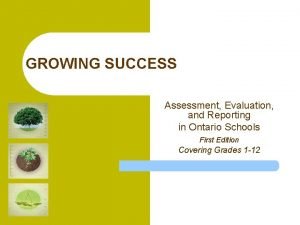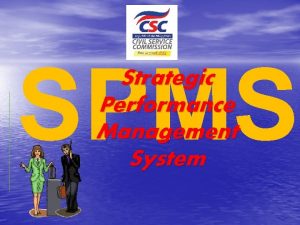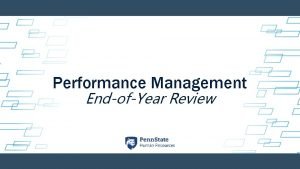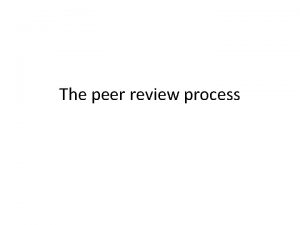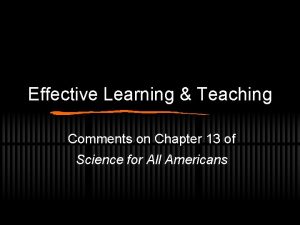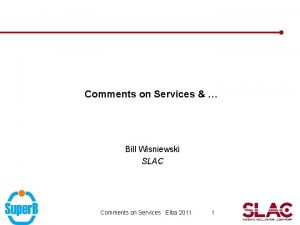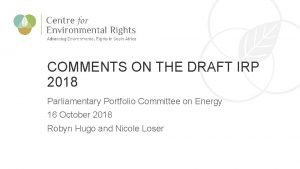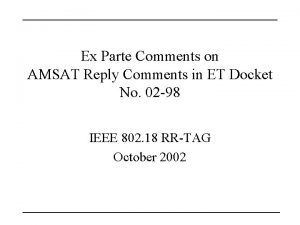your homework 5 comments on your homework 1



































- Slides: 35

your homework #5 comments on your homework 1

homework #6 • chapter 22, p 596, questions 1 -3 • due Friday November 24 2

Reading and homework #7 • for the week of November 27 • Homework #7 due December 4 3

Chapter 12: Food, Soil, and Pest Management • What is food security? • How is food produced? • What environmental problems arise from industrialized food production? • How can we protect crops from pests more sustainably? • How can we improve food security? • How can we produce food more sustainably? 4

• Agriculture today produces more than enough food to meet the basic nutritional needs of every person on the earth • What is food security? [all have daily access to enough nutritious food] • food insecurity: living with chronic hunger and poor nutrition (1/6 people) • chronic malnutrition - deficiencies of protein and other key nutrients • root cause of food insecurity is poverty [or war] - and not agriculture • 2007 study: higher than 90% chance that by 2100, ½ of the world’s population will face serious food shortages because of climate change • What is food sovereignty? 5

how is food produced? • Food production has increased dramatically • croplands: produce mostly grain and provide about 77% of world’s food using 11% of its land area • rangelands, pastures, and feedlots: produce meat and meat products; supply 16% of world’s food using 29% of world’s land area • fisheries and aquaculture: 7% of world’s food • 50, 000 plant species: 14 of them supply 90% of world’s food calories [rice, wheat, corn provide 48% of calories] remember: biodiversity principle of sustainability! • increase: use of tractors and farm machinery; irrigation development; industrialized production 6

Industrialized crop production relies on high-input monocultures • uses heavy equipment; large amounts of financial capital, fossil fuels, water, inorganic fertilizers and pesticides - to produce monoculture [single crop] • plantation agriculture: cash crops (bananas, soybeans to feed livestock; sugarcane; coffee, palm oil (for cooking oil and biodiesel fuel); in tropical countries for export • large greenhouse to raise crops indoors • Is it sustainable? violates the 3 principles of sustainability (fossil fuels; no diversity; conservation and recycling of nutrients in topsoil ignored) 7

traditional agriculture relies on low-input polycultures • 2. 7 billion people (39%) - traditional ag; 1/5 of world’s food crops on ¾ of its cultivated land • traditional subsistence agriculture • • energy from the sun + human labor and draft animals = crops to feed a farm family with little left over • polyculture slash-and-burn agriculture • • 10 -30 years of soil fertility low-input polyculture produces higher yields than high-input monoculture! 8

industrial crop production • green revolution: since 1950, 88% of the increase in global food production has come from using high-input industrialized agriculture to increase crop yields • (1) develop and plant monocultures of selectively bred or genetically engineered high-yield varieties of key crops • (2) produce high yields by using large inputs of water and manufactured inorganic fertilizers and pesticides • (3) increase the number of crops grown per year on a plot of land through multiple cropping 9

meat production has grown • meat and animal products (eggs and milk) - world’s second major foodproducing system • 1967 to 2007: beef, pork and poultry increased more than 4 -times and average meat consumption person doubled! Each year, 56 billion animals are raised and slaughtered for food. Global meat production likely to more than double again by 2050 (due to affluence in China and India) • industrialized factory farm system / unfenced rangelands and enclosed pastures • most veal calves, pigs, chickens and turkeys that are raised in moredeveloped countries spend their lives in crowded pens in huge building • increased demand for grain, + loss of cropland to urban development = increased reliance on grain imports… Saudi Arabia example? 10

fish and shellfish production • in 2010, ½ of all fish eaten in the world produced through aquaculture (raising marine and freshwater fish in freshwater ponds or underwater cages in coastal or open ocean waters) • at least 63% of world’s ocean fisheries are being depleted or overexploited • • trawling 2. 6 billion people now depend on fish for 20% of their animal protein 11

12

13

14

15

16

What environmental problems arise from industrialized food production? 17

18

19

20

21

22

23

GMO 24

How can we protect crops from pests more sustainably? 25

• pesticides: chemicals used to kill or control populations of undesirable organisms (herbicides, fungicides, rodenticides, insecticides) • 1 st generation pesticides [natural chemicals from plants] • 2 nd generation pesticides [DDT, famous example] • Rachel Carson’s silent spring • Nature controls the populations of most pests - through natural enemies [30, 000 known species of spiders kill more insects every year than humans do by using chemicals] / IPM • biodiversity principle of sustainability • know the ‘law of unintended consequences’ story 26

27

28

29

30

31

32

33

34

35
 How do you write a good comment?
How do you write a good comment? Homework oh homework i hate you you stink
Homework oh homework i hate you you stink Homework oh homework i hate you you stink
Homework oh homework i hate you you stink Parts of a poem
Parts of a poem Homework oh homework jack prelutsky
Homework oh homework jack prelutsky Homework oh homework i hate you you stink
Homework oh homework i hate you you stink Literal and figurative language
Literal and figurative language Additional comments uc application
Additional comments uc application Tat appraisal comments
Tat appraisal comments Integrity appraisal comments examples
Integrity appraisal comments examples Npqml final assessment examples 2019
Npqml final assessment examples 2019 Growing success grade chart
Growing success grade chart General remarks example
General remarks example C++ style comments
C++ style comments Qet meaning in ipcr
Qet meaning in ipcr Housekeeping appraisal comments
Housekeeping appraisal comments Npqh task 2 examples
Npqh task 2 examples Expectations for unit and ratee examples
Expectations for unit and ratee examples Coaching review comments
Coaching review comments What went well comments
What went well comments Pydoc comments
Pydoc comments What is the result of the following vik null ram
What is the result of the following vik null ram Myp cards
Myp cards Aja cortizo
Aja cortizo Commentswrite a comment…
Commentswrite a comment… Comments in ees
Comments in ees Thank you for valuable comments
Thank you for valuable comments Reviewer comments
Reviewer comments Reviewer comments
Reviewer comments Reviewer comments
Reviewer comments Collegial approach
Collegial approach Ndia evms intent guide
Ndia evms intent guide Good comments
Good comments Comments for chapter 13
Comments for chapter 13 Comments and suggestions for teachers observation
Comments and suggestions for teachers observation Intelligence evaluation codes
Intelligence evaluation codes











